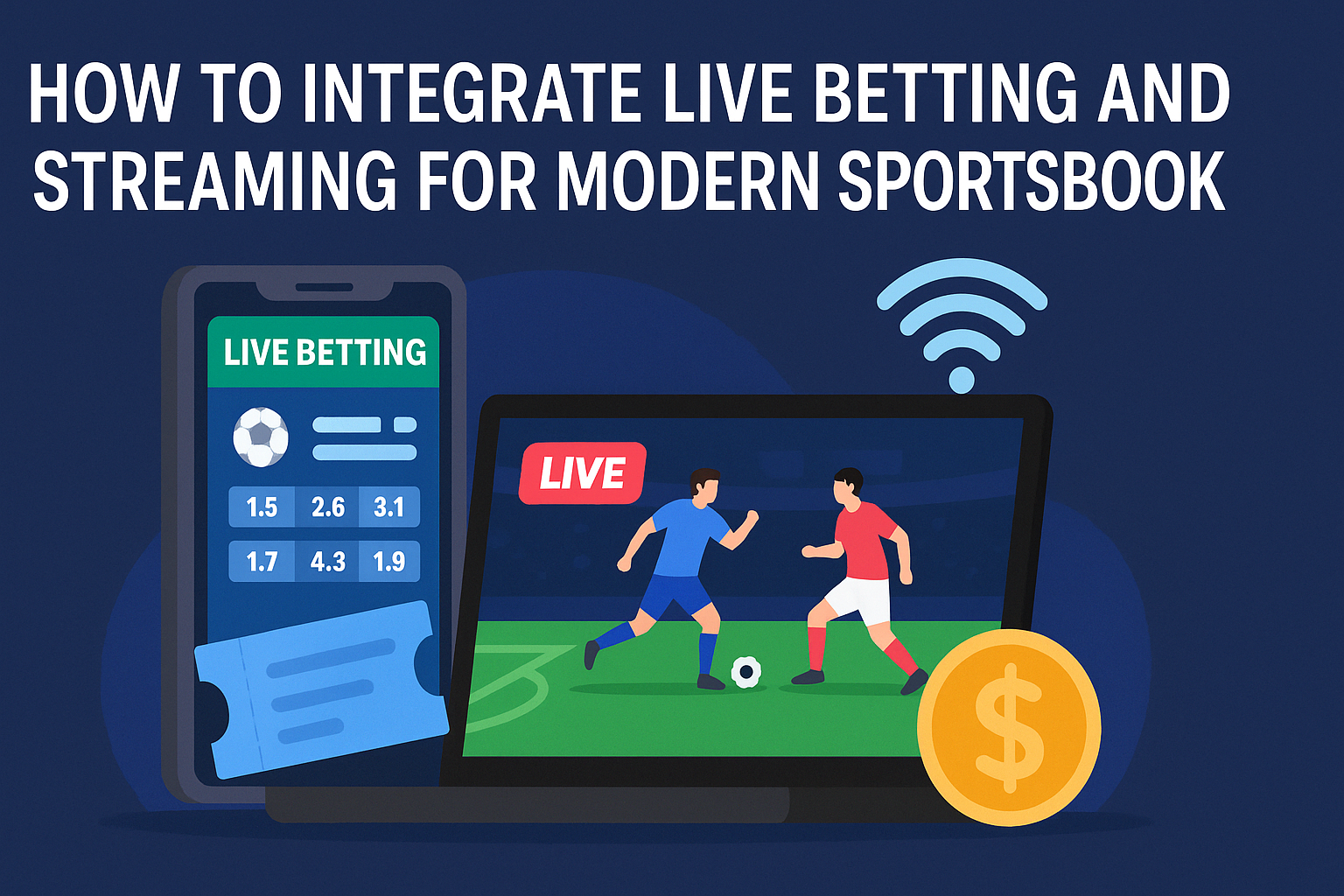How to Integrate Live Betting and Streaming for Modern Sportsbooks

Introduction: The Evolution of Sportsbooks
The world of sports betting has transformed dramatically over the last decade. From traditional brick-and-mortar betting shops to sophisticated online platforms, the industry has embraced technology to keep up with the demands of a digital audience. Today, integrating live betting and streaming is not just a luxury—it’s a necessity for sportsbooks aiming to thrive in a competitive environment. In fact, advancements in sports betting software development have made it easier than ever to combine data, streaming, and wagering into a seamless experience that keeps bettors engaged.
Why Live Betting and Streaming Are Essential in Modern Sportsbooks
Changing User Preferences and Expectations
Today’s bettors expect more than static odds. They crave real-time engagement, instant gratification, and immersive experiences. Live betting—also called in-play betting—enables users to place wagers as the action unfolds, dramatically increasing excitement.
Meanwhile, live streaming allows bettors to watch the event simultaneously. This combination means users don’t have to switch platforms or channels, keeping them engaged on your sportsbook for longer.
Competitive Edge in a Crowded Market
Integrating live betting and streaming can differentiate your sportsbook from competitors. As more operators enter the market, providing a seamless, engaging experience is critical for customer retention and acquisition. It also opens up opportunities for creative markets like next-goal betting or live player props, enhancing the thrill.
Core Components Needed for Integration
Reliable Data Feeds
To enable live betting, sportsbooks rely on robust, real-time data feeds. These feeds supply instant updates on scores, player stats, and other crucial metrics that adjust odds dynamically. The choice of data partners and the integration approach often varies among different Sportsbook Software Providers, each offering unique solutions for latency, reliability, and customization.
High-Quality Streaming Infrastructure
Streaming isn’t merely about showing a video; it’s about delivering high-quality, low-latency streams that synchronize well with live odds. This requires partnerships with media providers or setting up your own infrastructure that ensures minimal lag.
User Interface (UI) and Experience (UX)
Even with flawless data and video, a poor interface will drive users away. Bettors want odds displayed clearly alongside the live stream, intuitive bet slips, and fast confirmations—all without interruptions.
Technical Strategies to Integrate Live Betting with Streaming
API-Based Solutions
Benefits of Using APIs
APIs allow sportsbooks to seamlessly pull live data and embed streams from content providers. This modular approach ensures scalability, as sportsbooks can integrate different providers for video, stats, and payments without building everything from scratch.
Synchronization of Streams and Odds
A key technical hurdle is ensuring that video streams and live odds stay aligned. If the stream lags behind the odds, bettors may feel cheated. Advanced synchronization algorithms and buffering controls help align video with betting data.
Latency Management Techniques
Using CDN edge servers, adaptive bitrate streaming, and optimized encoding can reduce delays. The goal is to bring latency under 5 seconds, which is the benchmark for most successful live betting experiences.
Compliance and Licensing Considerations
Geo-Restrictions and Content Rights
Streaming live sports involves complex broadcasting rights. Sportsbooks must ensure they have legal rights to stream in specific regions and enforce geo-blocking where required.
Data Security and Fair Play Regulations
Handling user data, payments, and betting outcomes means strict adherence to data protection laws (like GDPR) and fair play rules enforced by gaming commissions. Using encrypted transactions and third-party audits builds trust.
Monetization Models for Live Betting & Streaming
Subscription vs Free Streams with Betting Odds
Some sportsbooks monetize by offering premium streams to paying members, while others use free streams to keep users engaged and boost betting volume.
In-Play Promotions and Micro-Markets
Live betting opens doors to micro-markets such as next-point in tennis or next-corner in football. Promotions like boosted odds or cashback on live bets drive further engagement.
Enhancing Engagement Through Technology
AI and Predictive Analytics for Live Betting
AI can predict player performance or match outcomes in real-time, offering bettors smarter insights and personalized odds. This increases betting activity and user satisfaction.
Gamification Features
Leaderboards, achievements, and loyalty rewards turn casual bettors into regulars. Integrating these with live betting makes the experience more interactive.
Challenges in Integration and How to Overcome Them
Technical Challenges
Latency, bandwidth, and data integration remain hurdles. Partnering with specialist vendors and investing in scalable cloud solutions helps overcome these barriers.
Regulatory Challenges
Each market has its own legal landscape. Working with compliance experts ensures your sportsbook adheres to licensing, anti-money laundering (AML), and responsible gambling guidelines.
How Innosoft Group Helps Modern Sportsbooks with Integration
Innosoft Group stands out among top Sportsbook Management Providers, offering robust solutions tailored to modern betting environments. Their expertise in building scalable, secure, and feature-rich platforms means you don’t have to navigate these complexities alone. From custom API development to integrating high-quality streams and ensuring compliance with international regulations, Innosoft provides end-to-end services that allow you to focus on growing your business while they handle the technical intricacies.
Conclusion: Future of Live Betting and Streaming
The fusion of live betting and streaming is revolutionizing the sports betting landscape. It transforms passive watchers into active participants, driving revenues and deepening loyalty. By partnering with experienced tech providers like Innosoft Group, sportsbooks can implement cutting-edge features that meet evolving user expectations while staying compliant and secure.
Frequently Asked Questions (FAQs)
Q1. Why is integrating live streaming so important for sportsbooks?
It keeps users engaged on the platform longer, boosting betting volumes and retention rates.
Q2. How do sportsbooks ensure streams and odds stay in sync?
Through advanced synchronization protocols, low-latency networks, and carefully managed buffers.
Q3. Is it legal to stream all sports events on a sportsbook?
No. You must obtain the appropriate broadcasting rights and comply with regional restrictions.
Q4. What are micro-markets in live betting?
These are small, quick betting opportunities like “next goal” or “next foul,” popular for live engagement.
Q5. How does latency affect live betting?
High latency can result in outdated odds, leading to unfair bets. Low latency keeps betting fair and competitive.
Q6. How does Innosoft help with sportsbook compliance?
They implement systems that adhere to global data protection, AML, and gaming fairness standards.
- Art
- Causes
- Crafts
- Dance
- Drinks
- Film
- Fitness
- Food
- Juegos
- Gardening
- Health
- Home
- Literature
- Music
- Networking
- Other
- Party
- Religion
- Shopping
- Sports
- Theater
- Wellness



